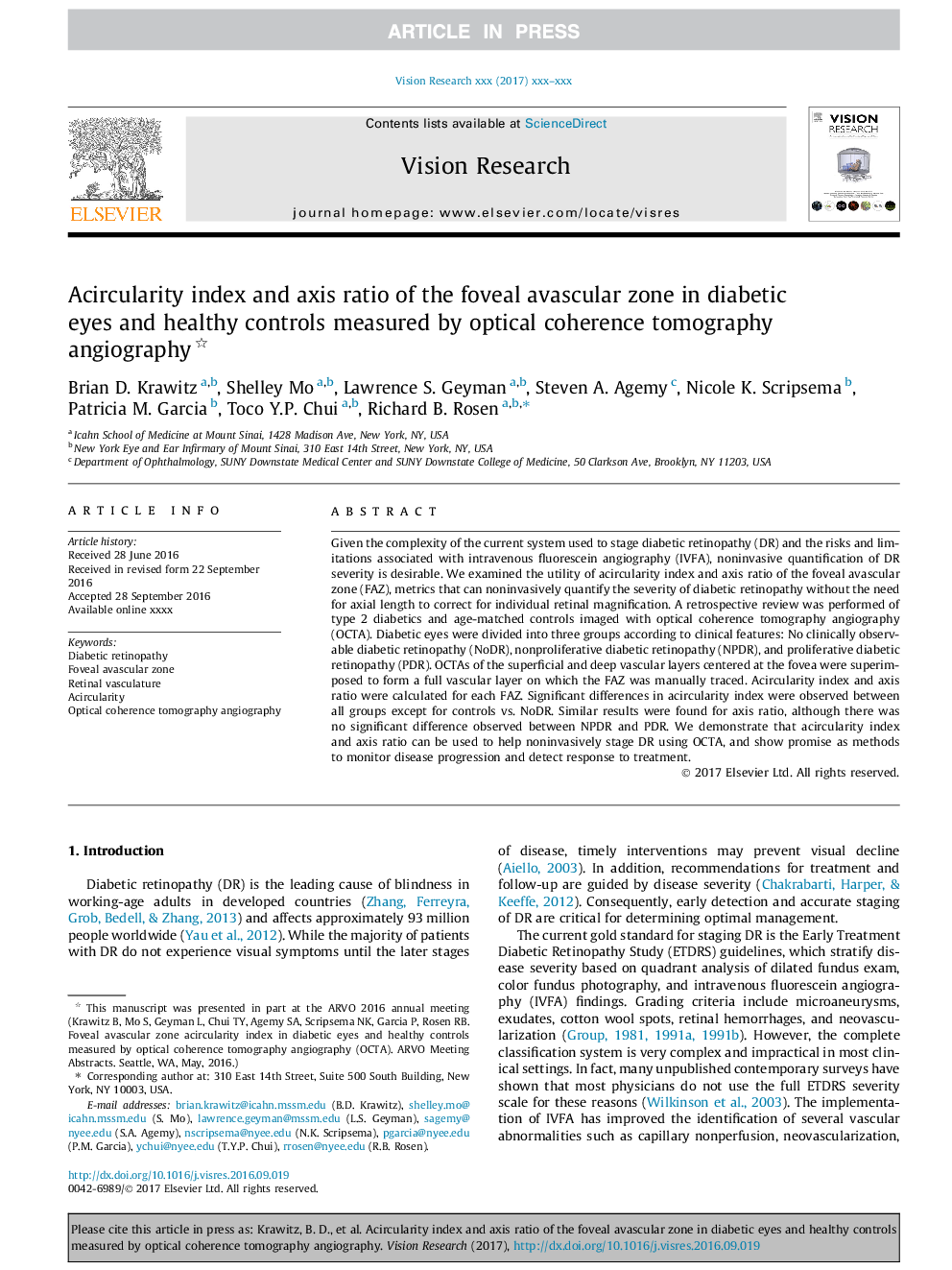| Article ID | Journal | Published Year | Pages | File Type |
|---|---|---|---|---|
| 8795394 | Vision Research | 2017 | 10 Pages |
Abstract
Given the complexity of the current system used to stage diabetic retinopathy (DR) and the risks and limitations associated with intravenous fluorescein angiography (IVFA), noninvasive quantification of DR severity is desirable. We examined the utility of acircularity index and axis ratio of the foveal avascular zone (FAZ), metrics that can noninvasively quantify the severity of diabetic retinopathy without the need for axial length to correct for individual retinal magnification. A retrospective review was performed of type 2 diabetics and age-matched controls imaged with optical coherence tomography angiography (OCTA). Diabetic eyes were divided into three groups according to clinical features: No clinically observable diabetic retinopathy (NoDR), nonproliferative diabetic retinopathy (NPDR), and proliferative diabetic retinopathy (PDR). OCTAs of the superficial and deep vascular layers centered at the fovea were superimposed to form a full vascular layer on which the FAZ was manually traced. Acircularity index and axis ratio were calculated for each FAZ. Significant differences in acircularity index were observed between all groups except for controls vs. NoDR. Similar results were found for axis ratio, although there was no significant difference observed between NPDR and PDR. We demonstrate that acircularity index and axis ratio can be used to help noninvasively stage DR using OCTA, and show promise as methods to monitor disease progression and detect response to treatment.
Keywords
Related Topics
Life Sciences
Neuroscience
Sensory Systems
Authors
Brian D. Krawitz, Shelley Mo, Lawrence S. Geyman, Steven A. Agemy, Nicole K. Scripsema, Patricia M. Garcia, Toco Y.P. Chui, Richard B. Rosen,
